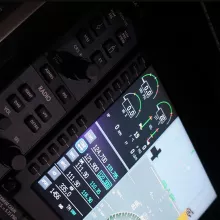-
Michel MASSON posted in General Aviation
3 weeks ago PublicBest Practices for Commercial Operators in Airspace Class E
SKYbrary Highlight, 15 Dec. 2025
https://mailchi.mp/skybrary.aero/best-practices-for-commercial-operator…Relates to the recently published article: https://www.easa.europa.eu/community/topics/spot-conflict-iconspicuity-…
Quote: A set of best practices has been developed by flight safety officers and industry experts in Germany to enhance the safety of operations in airspace Class E below FL100 to prevent collisions between controlled and uncontrolled aircraft in a mixed traffic environment. It will be of interest to operators worldwide.
Read the full article here:
https://skybrary.aero/articles/best-practices-commercial-operators-airs…Related articles
• Transponder Mandatory Zone (TMZ)
https://skybrary.aero/articles/transponder-mandatory-zone-tmz
• Classification of Airspace
https://skybrary.aero/articles/classification-airspace
• See and Avoid
https://skybrary.aero/articles/see-and-avoid -
John FRANKLIN created a topic in General Aviation
-
Michel MASSON created a topic in General Aviation
-
John FRANKLIN created a topic in General Aviation
-
Michel MASSON created a topic in General Aviation
-
Michel MASSON posted in General Aviation
2 months ago PublicRAeS Light Aircraft Design Conference 2025
10 November 2025
Royal Aeronautical Society Headquarters ConferenceBook now for the RAeS Light Aircraft Design Conference 2025, which will be held on Monday 10 November 2025 in London and online!
https://www.aerosociety.com/light-aircraft-2025?utm_campaign=2995066_Li…
View the full programme here:
https://www.aerosociety.com/media/27239/programme-v1-0-ga-conference-20…Quote: The conference provides a unique opportunity to meet and discuss the latest developments in Light Aircraft technology. Programme highlights include the application of new concepts, E Conditions, design and construction, flight testing, and project case studies, as well as an insight into the Design, Build, Fly initiative and of course the announcement of the winners of this year's Light Aircraft Design Competition!
-
Michel MASSON created a topic in General Aviation
-
Michel MASSON created a topic in General Aviation
-
Michel MASSON created a topic in General Aviation
-
Heinz Falkner posted in General Aviation
4 months ago PublicHi everyone, I’m Heinrich from Austria. I’ve been flying for many years and these days I enjoy taking my Piper PA-28 up for leisure flights around the Alps. Happy to be here and looking forward to chatting with fellow aviation enthusiasts."





